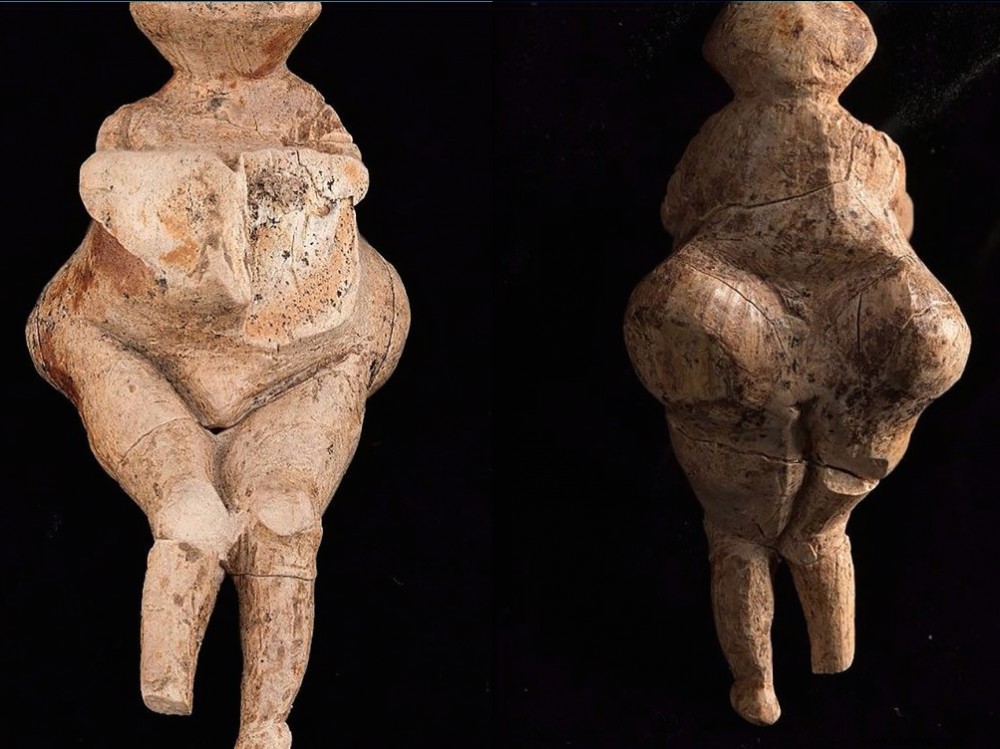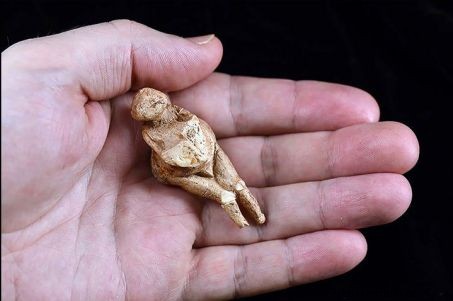A delicate Palaeolithic Venus has just been discovered in the Bryansk region of Russia.

Two-sided views of the Venus of Bryansk (Russia).
IVORY. Barely 5 cm high, carved in the ivory of a woolly mammoth tusk, a new Paleolithic "Venus" dated -23,000 years ago was recently discovered in Siberia. With its voluminous buttocks and generous breasts, the exquisite work in the round is, despite its small size, consistent with the “classic” criteria of these female statuettes. It is in the region of Bryansk, in the west of Russia, that the experts of the Department of Paleolithic Archeology of the Institute of Archeology and Ethnography of Moscow unearthed this moving vestige, on a site called Khotylyovo -2 which they have been studying since 1993. According to Konstantin Gavrilov, the author of the find revealed by the Siberian Times website April 17, 2017, the figurine with bent legs was placed on the ground, near the bones of mammoths on which traces of mineral pigments were still visible. Recently, a similar specimen was also found near the Angara River, on the side of Lake Baikal.

The Venus of Bryansk, in the hands of Russian archaeologist Konstantin Gavrilov. © Courtesy Institute of Archeology and Ethnography
With their voluminous forms and their absent faces, these human-shaped sculptures, of which there are today nearly 250 examples, have been unearthed since the end of the 19th century from the Atlantic to the borders of the Russian steppes. The first of them, the “Immodest Venus” was unearthed in France, at Laugerie-Basse, in the Dordogne, in 1864. Curiously, none of these statuettes has yet been encountered in the Iberian Peninsula. From 4 cm to 25 cm high, they date back more than 35,000 years for the oldest, like the one unearthed in 2008 on the site of Hohle Fels (Swabian Jura), in Germany. They have known for the majority of them an extraordinary constancy in their appearance for millennia, whatever the time or place. All appear to have been created “without feet or pedestals on which to stand ”, as the anthropologist Alain Testart, now deceased, pointed out. The role and function of these silhouettes fashioned in ivories, soft rocks or modeled in terracotta, are still debated. In France, the last Venus, known as Renancourt, 15 cm high and cut in limestone, was found in 2014 in the region of Amiens.
